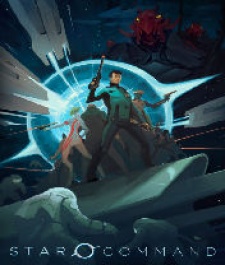Since Double Fine Adventure lit the blue touch paper on the Kickstarter model, indies around the globe have attempted to reach out to fans to get their projects off the ground.
Just how many have been successful is unclear, but War Balloon Games has revealed just how it spent the money it sourced from its own crowdfunding venture for space-sim Star Command.
It's a candid assessment that no doubt won't surprise developers, but may raise the eyebrows of a fair few Kickstarter users.
Kick up the backside
War Balloon Games opened its Star Command Kickstarter project back in September 2011 notably a good five months ahead of Double Fine's phenomenally successful venture - reaching the target amount of $20,000 within its first five days and closing off at $36,967 in October.
Six months on, and the studio has addressed its backers in an update explaining where the money has been spent.
Starting with the absences of $2,000 from no-shows, KickStarter and Amazon Payments naturally took their fill, leaving the developer with $32,000. A further $10,000 went on prize fulfilment, which included printing posters and t-shirts and shipping them globally.
In regards to the remaining $22,000, War Balloon spent $6,000 on game music, $4,000 on attorneys, startup fees and CPA, $2,000 on poster art, $1,000 on iPads and $3,000 on attending PAX East.
That left the studio with $6,000 to actually finish the game itself - combined with music costs, that's 32 percent of the total pledged.
If I could turn back time
So what would War Balloon have done differently?
Keeping attorneys out of the equation is one lesson learned, while the developer claims it could have better prepared itself for the costs of printing 200 posters, t-shirts, and other rewards.
"We have still taken a lot of debt on ourselves (over $50k), and hopefully this can help give insight to other kickstarters and would-be-developers on what to expect," explained the company on its Kickstart page.
"All that said though, its been great and the game would not be where it is if it wasn't for kickstarter. We have made a game we're really, really proud of and you guys should be too."
Star Command is still on schedule for a summer 2012 release on iOS and Android.
As can be seen in the comments section below, War Balloon Games contests our take on the firm's figures, pegging games development costs at around 65 percent of the funds raised.
[source: War Balloon Games]
Less than a third of Kickstarter funds went on developing Star Command, admits War Balloon
Where the money goes






















